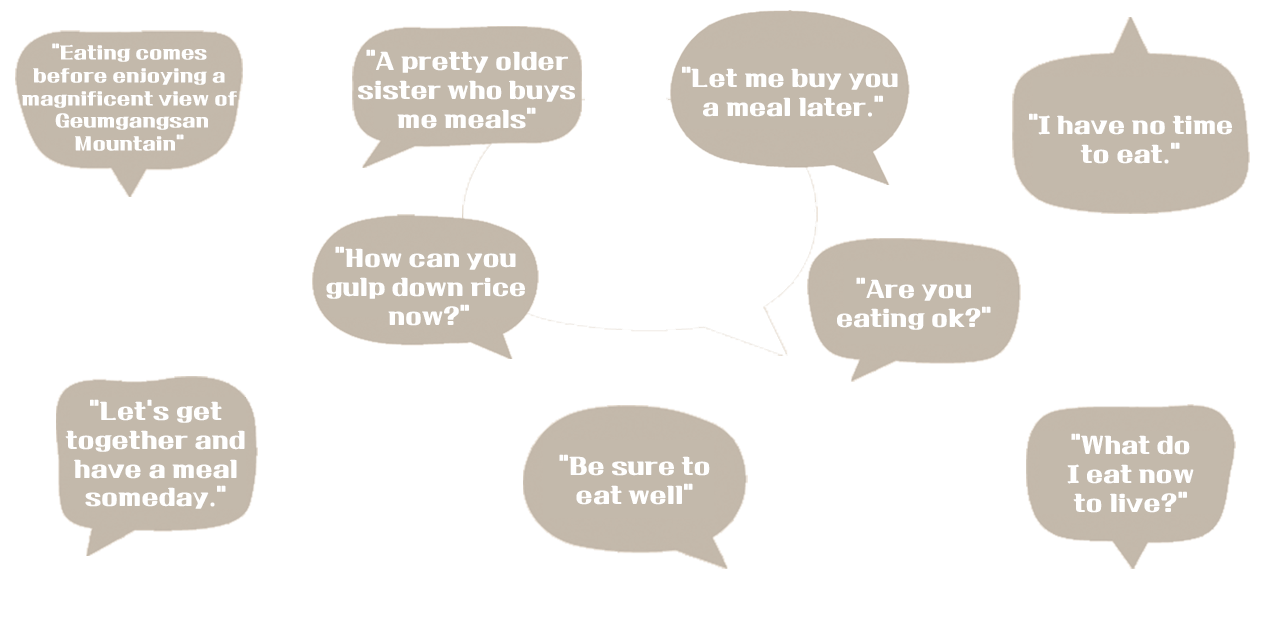Utility of Daily Routine
The Nation of Foodies
A Record of Korean Food
For Koreans, rice is not just a meal. Koreans ask if you have already eaten as a way of saying hi and often offer to get together for a meal when they say goodbye. Why are Koreans obsessed with food or eating together?
📝Text by. Su-bin Cho



The meaning of a warm meal
When you are running low on energy, rice can be a quick cure that can work better than any other medicine. That’s right. Koreans live on rice. Koreans and rice are inseparable. That is why we have so many expressions of greetings and proverbs that include rice or meal. When someone is starving or having difficulty, Koreans offer him or her a warm meal even if he or she is a stranger, and we treat guests to nice meals and make sure they are full, which is a token of humanitarianism. Since Koreans take rice or food quite seriously, Korea is called “the nation of foodies.” In fact, it is not entirely a joke when we call ourselves “the people of rice.” Koreans have always been big eaters throughout history.
According to Sweimirok written in the mid-Joseon period, an average adult male ate 7 hops per meal, which is equivalent to 1.2 liters of rice. Samgukyusa, Memorabilia of the Three Kingdoms writes, “The king had three mal of rice and 9 pheasants per day….”; this indicates that people back then were big eaters regardless of class.
How did Koreans become such big eaters? Rice is the staple food of the Korean diet. Growing rice requires massive amounts of labor, and farmers had to eat a large meal in order to be able to work on the farm all day long. Throughout history, Koreans have lived and worked together as members of communities, helping each other. In this context, sharing food and expressing thanks by treating themselves to a nice meal formed part of the traditional community culture. Due to the legacy of this community culture, Koreans tend to be generous and giving when having a meal even today.
The foodie DNA, the power to lead global food trends via social media. A case in point is “K-desserts.” Koreans reinterpret the desserts and snacks of other countries with a touch of traditional Korean style and taste. For example, macaron, a French dessert, is stuffed with a wide variety of ingredients and reborn as “fatcaron.” Croissants are baked in a waffle pan and transformed into what is an upgraded version of waffle. Tanghulu goes through major transformations in Korea with whole fruits put on the skewer or with a bold addition of chunks of marshmallow.
As an audiovisual broadcast featuring the act of eating large quantities of food, “Mukbang” has been so popular worldwide that the word has been listed in the Oxford English Dictionary.
The Korean food culture has been further enriched by "hanjengsik," a traditional Korean-style full-course meal characterized by an array of different food items and the food delivery service that is available anytime, anywhere. Culture goes through changes over time. As long as the foodie DNA lingers on, however, food is the energy, affection, and love for Koreans.
The big-eater gene runs in the blood of Koreans.

